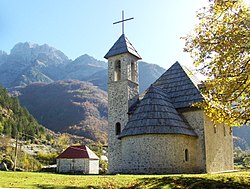Dua Lipa
In January 2017, she won the EBBA Public Choice Award. Her self-titled debut studio album was released on 2 June 2017. The album spawned seven singles, including two UK top-10 singles "Be the One" and "IDGAF" and the UK number-one single "New Rules".Dua Lipa (/ˈduːə ˈliːpə/; Albanian: [dua liːpa]; born 22 August 1995) is an English singer, songwriter, and model. Her musical career began at age 14, when she began covering songs by other artists on YouTube. In 2015, she was signed with Warner Music Group and released her first single soon after. In December 2016, a documentary about Lipa was commissioned by The Fader magazine, titled See in Blue.
Early life
At the age of 14, she began posting covers of her favourite songs by artists such as P!nk and Nelly Furtado on YouTubeAt the age of 15, she moved back to London with aspirations of becoming a singer. Shortly after, she began working as a model.In 2013, she starred in a television advertisement for The X Factor.
Career
2015–17: Breakthrough and Dua Lipa
In 2015, Lipa began working on her debut album for Warner Music Group. In August 2015, she released her first single "New Love",produced by Emile Haynie and Andrew Wyatt.She released her second single "Be the One", in October 2015. "Be the One" achieved success across Europe, reaching number one in Belgium,Poland and Slovakia, as well as charting within the top 10 in over 11 European territories. In Australia and New Zealand, the song became an airplay success, reaching numbers 6 and 20 respectively. Lipa describes her musical style as "dark pop". On 30 November 2015, she was revealed as one of the acts on the BBC Sound of...2016 long list Her first tour in the UK and Europe began in January 2016. In November 2016, Lipa concluded her tour through Europe.
On 18 February 2016, Lipa released her third single "Last Dance", followed by "Hotter than Hell" on 6 May. "Hotter than Hell" became a hit worldwide, especially in the UK, where it peaked at number 15. On 26 August, her fifth overall single "Blow Your Mind (Mwah)" was released, peaking at number 30 in the UK.It became the singer's first entry on the US Billboard Hot 100, debuting at number 72 "Blow Your Mind (Mwah)" also topped the Billboard Dance Club Songs chartand reached number 23 on the Billboard Mainstream Top 40 chart.
In November 2016, Sean Paul released the single "No Lie" featuring Lipa. The song reached number 10 in the UK.In December 2016, a documentary about Lipa was commissioned by The Fader magazine, called See in Blue.In January 2017, Lipa released the single "Scared to Be Lonely" with Martin Garrix, reaching number 14 in the UK.
Her self-titled debut studio album was released on 2 June 2017. Its sixth single "New Rules", became Lipa's first number one in the UK.Hello" by Adele in 2015.[29] Her best selling single to date, the song has also charted in the top 10 in other territories, including number 2 in Australia and number 7 in Canada and United States, where it became her first top ten single.[30] Lipa performed at the Glastonbury Festival in June, pulling in one of the biggest audiences at the event. In December 2017, Lipa was named the most streamed woman of 2017 in the UK by Spotify. She had four singles reach the UK top 10 in 2017, with "Be the One", "Bridge over Troubled Water" (a charity single arranged by Simon Cowell for the families of the victims of the Grenfell Tower fire in London), "New Rules" and "No Lie".
In doing so, it also became the first song in nearly two years by a female solo artist to reach the top in the UK since "
On 18 December 2017 it was announced that Lipa would perform at the 2018 Brit Awards held on 21 February 2018 at the O2 Arena in London.
2018–present: Second studio album
 In January, Lipa was announced as a nominee in five categories at the 2018 Brit Awards. She is nominated in the categories of British Female Solo Artist, British Breakthrough Act, MasterCard British Album of the Year ("Dua Lipa"), British Single of The Year ("New Rules") and British Video of The Year ("New Rules"). This marks the first time that a female artist has received five Brit Award nominations. She is also scheduled to perform at the awards ceremony.
In January, Lipa was announced as a nominee in five categories at the 2018 Brit Awards. She is nominated in the categories of British Female Solo Artist, British Breakthrough Act, MasterCard British Album of the Year ("Dua Lipa"), British Single of The Year ("New Rules") and British Video of The Year ("New Rules"). This marks the first time that a female artist has received five Brit Award nominations. She is also scheduled to perform at the awards ceremony.
Lipa announced via social media that she had begun working on new material for her second album. She is working with MNEK, who previously co-wrote her single "IDGAF"
Lipa collaborated with electronic music producer Whethan on a song called "High" for the Fifty Shades Freed soundtrack released in February 2018.











































